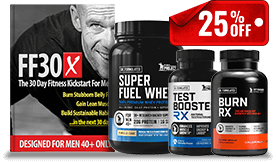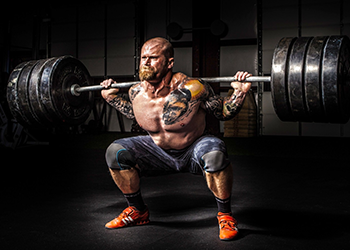 I want to congratulate you on taking the first step in your new muscle gain journey.
I want to congratulate you on taking the first step in your new muscle gain journey.
In this guide, you will learn the 6 principles of muscle building you NEED to follow, from training and sleeping, to meal suggestions and supplementation. We're going to cover every facet of the principles of muscle building!
I will walk you through the information you are going to need, to succeed in getting your body looking exactly how you want it. Strong, defined, powerful and solid! A body fit for a superhero.
You will understand the techniques and principles that countless ‘old school' bodybuilders and muscle building mentors have used to increase their muscle size. Principles that these guys still use today, to look great in their 80's!
By the end of this guide, you will know:
-
- When to train and when to rest.
-
- What exercises to use to maximise the effectiveness of your training.
-
- Which rep ranges you need, to produce the best gains.
-
- What to eat to pack on muscle and not fat.
-
- How much sleep you should be getting to maximise mass.
-
- Which supplements will compliment your training and your health.
I'm excited to share this amazing information with you, so let's get to it. Enjoy!
Principles of Muscle Building #1: Focus on Strength
 There are 2 key aspects to this principle of muscle building:
There are 2 key aspects to this principle of muscle building:
- Proper exercise to stimulate protein synthesis (inside the gym)
- Recovery phase to repair and actually grow the muscle (outside the gym)
When we exercise with weights, our workouts create micro-trauma inside our muscles that then STIMULATES our bodies to build new proteins and grow the muscle stronger before the next exercise session.
With that in mind, our goal with our workouts is to achieve the peak amount of protein synthesis stimulation, without pushing you over the edge, into ‘overtraining.”
That’s why we need to complete the ideal number of sets each workout – no more and no less – before allow your body to shift into recovery. Training for strength is what accomplishes muscle growth.
Exercising to build muscle is a lot like pushing an elevator button.
Once you’ve pushed the button (achieved the optimal muscle protein synthesis effect from your workout), jamming on the button (with more sets and reps) won’t make the elevator come any faster.
It will simply waste your time, energy, and potentially injure you.
If 8 sets of chest exercises produce 95% of possible muscle protein synthesis… then it makes very little sense to do ANOTHER 10 sets (like most chest workouts) to try and inch out the final 5% of stimulation.
Those extra 10 sets are simply damaging your muscle unnecessarily and impairing your ability to recover.
The most sensible training method for guys in their 40’s, 50’s and onwards is higher frequency training plans – like full body resistance training that we recommend in our Old School Muscle Program.
Full body strength training will not only give you the ideal muscle stimulation spread throughout the week, but these types of workouts are also the most ideal for adequate recovery for growth.
How aging affects recovery
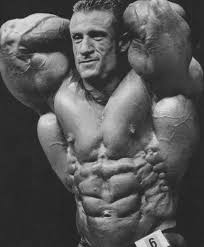 In an interview with bodybuilding.com, six times Mr. Olympia, Dorian Yates, says:
In an interview with bodybuilding.com, six times Mr. Olympia, Dorian Yates, says:
The only way you can effectively grow your muscles is by allowing proper rest and recovery time between workouts. That is a principle that’s true whether you’re 17 or 97.
Yet, as we get older, the ability of our muscles to recover from workouts slows down. It’s not as easy to recover from that 18 set chest workout in your 40s as it was in your 20s.
- We want to make sure we are doing the ideal number of sets each workout (not more than needed for ideal muscle protein synthesis).
- We want to allow at least 48 hours between workouts is going to ensure your muscles can recover in time for the next session.
Remember: The slowing of our recovery capacity with age doesn’t mean you can’t “build a big house”, it just means that you need a bit more time and a better strategy to build it.
That’s why one of the keys to muscle growth is to SPREAD those “18 sets” of volume (from our previous example) throughout the week in the form of higher frequency, full body training.
Using the proven exercises that we’re about to show you below, in a full body workout program like Old School Muscle, will make sure you are getting the best of muscle building progress possible.
Principles of Muscle Building #2: Use Compound Movements
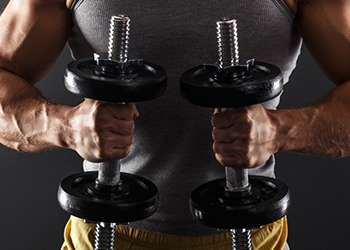 What’s the #1 most important aspect of making LONG-TERM progress in the gym?
What’s the #1 most important aspect of making LONG-TERM progress in the gym?
If you guessed “staying injury-free” you are 100% correct. Injuries are one of the fastest ways to derail your progress and take 10-steps backward.
That’s precisely why when training into your 40’s and over, you need to make sure that you are doing exercises that are giving you the biggest ‘bang for your buck’, BUT…. are keeping you safe and injury free at the same time.
Below, I have listed the exercises that EMG (Electromyography) studies have proven to be the most effective at activating muscle fibres by muscle group.
As you will see, dumbbell exercises appear top, or at least highly in almost all of them.
Lower chest – Decline dumbbell bench press – 93% muscle fibre activation
Upper chest – Incline dumbbell bench press – 91% muscle fibre activation
Lats/Back – Bent-over Barbell rows – 93% muscle fibre activation
One-arm dumbbell rows – 91% muscle fibre activation
Side deltoids – Incline dumbbell side laterals – 66 % muscle fibre activation
Standing dumbbell side laterals – 63 % muscle fibre activation
Seated dumbbell side laterals – 62 % muscle fibre activation
Front deltoids – Seated front dumbbell press – 79% muscle fibre activation
Standing front dumbbell raises – 73% muscle fibre activation
Rear deltoids – Standing dumbbell bent-over laterals – 85% muscle fibre activation
Seated dumbbell bent-over laterals – 83% muscle fibre activation
Biceps – Biceps preacher curls (Olympic bar) – 90% muscle fibre activation
Incline seated dumbbell curls (alternating) – 88% muscle fibre activation
Triceps – Decline triceps extensions (Olympic bar) – 92% muscle fibre activation
Triceps press downs (angled bar) – 90% muscle fibre activation
Quads – Squats (parallel depth, shoulder-width stance) – 88% muscle fibre activation
Hamstrings – Stiff Legged Deadlifts – 63% muscle fibre activation
As you age, dumbbells or kettlebells will be a better option for most of your training than both machines and barbells.
Dumbbells not only allow you more freedom of movement when you are completing the exercises, but also help develop stronger stabilizer muscles and strengthen ligaments and tendons that naturally degenerate as we age.
Furthermore, barbells often force you to lift in a set bar path (like the barbell bench press) and do not allow you to move the weights independently in a more natural arced fashion.
This “fixed bar path” aspect of both barbells and machines can create more potentially damaging stress on joints like your shoulders and knees than the same weight lifted in “free motion” with dumbbells.
That’s not to say you SHOULDN’T USE barbells. You absolutely should, especially compound movements.
Plus: There are a few form tricks that we show you inside Old School Muscle to make common exercises (like the bench press, squat, deadlift, and military press) so much healthier on your shoulders, knees, and low-back.
Principles of Muscle Building #4: Recover with Proper Nutrition and Sleep
 The next key part to building muscle, is your nutrition. Focus on a “lean bulking” meal plan with the proper calories to keep your fat-gains to a minimum. Recovery is vitally important, but the right recovery is equally as important.
The next key part to building muscle, is your nutrition. Focus on a “lean bulking” meal plan with the proper calories to keep your fat-gains to a minimum. Recovery is vitally important, but the right recovery is equally as important.
Remember: Exercise creates the stimulation (protein synthesis triggers) for muscle building during your workouts. After your workouts, you still need to provide your body with the proper fuel and sleep to recovery.
In this principle of muscle building, we’re going to touch upon the proper number of calories, macronutrients (proteins, carbs, & fats), meal timing, and supplementation that is ideal for muscle building.
Number of Calories to Eat:
As a rule of thumb, we recommend you eat 250-500 calories over your daily caloric expenditure for muscle growth. For most guys, this means following a meal plan that has 2500 – 3000 calories (depending on your activity level, height, weight, and age).
The point is to follow the principles of muscle building to grow muscle and not fat. If your goal is muscle growth, and you're already at a healthy body fat percentage, you should only gain 3 lbs of muscle a month. If you're gaining more than 5lbs a month, you're almost certainly gaining fat, which will be detrimental to your overall goals.
Protein, Carbohydrates, and Fat:
We like to break those calories down into the following ratios as a starting point:
- 30% of total calories from Protein
- 45% of total calories from Carbs
- 25% of total calories from Fats
Those are very reasonable starting percentages for your target calories. We can raise or lower your carbohydrate and fat numbers depending on your food preferences (i.e. if you’re more of a rice/potatoes guy… stick with 45% carbs; if you’re more of a bacon and eggs guy… lower your carbs to around 35% and bump your fat percentage to 30% total calories)
One muscle building nutrition mistake you NEED to avoid:
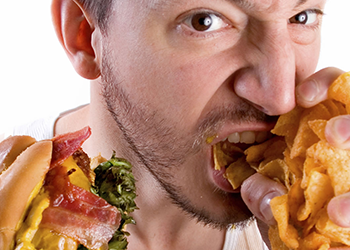 The problem with NOT knowing your target numbers is two-fold:
The problem with NOT knowing your target numbers is two-fold:
- You know you need to eat sufficient calories to build muscle. If you are eating fewer calories than you’re burning each day (aka a weight loss diet-style plan), you won’t build muscle.
- If you don’t know our calorie targets, it’s really easy to OVER EAT – leading to fat gain NOT muscle gain.
A lot of younger guys looking to build muscle try following “bulking” diet plans where they eat everything in sight. The result of this approach are usually some muscle gain with A LOT of fat gain.
After a bulking phase, guys then have to spend months aggressively dieting the fat off, which leads to MUSCLE LOSS. The net progress of this approach is poor.
And, as a man with an aging metabolism, the results of this “bulking” approach will be even worse (even more fat gain).
Essentially, getting the right calories on board at the right time will mean the difference between looking bigger and more defined, and looking bigger and “fluffy”!
Divide your calories across 3 main meals, 1 snack, and 1 post-workout shake:
As a starting point, the easiest way to divide your calories for building muscle would be the following approach:
- Breakfast (7-8am)
- Lunch (12pm)
- Snack (3pm)
- Post workout protein (after exercise)
- Dinner (7pm)
For a man with a calorie goal of 2,700 (which breaks down to ~200g Protein, 300g C, 75g F using our 30% P, 45% C, 25% F ratios), we’d divide his meals up accordingly:
Breakfast: 40g P, 75g C, 20g F
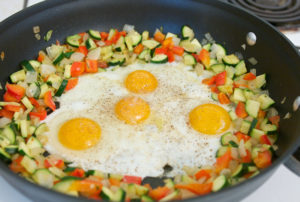 Sample meal that meet these numbers: 3 Eggs, 2 pieces’ whole wheat “Ezekiel Bread” toast, 1 cup berries, 1scoop protein powder.
Sample meal that meet these numbers: 3 Eggs, 2 pieces’ whole wheat “Ezekiel Bread” toast, 1 cup berries, 1scoop protein powder.
You can also make a quick Breakfast Shake following our 20+ breakfast recipes inside Old School Muscle Program Nutrition Guide.
Lunch: 40g P, 75g C, 20g F
Sample meal that meet these numbers: Burrito bowl at chipotle with chicken, rice, beans, lettuce, cheese, salsa (no guacamole or sour cream)
Snack: 30g P, 30g C, 15g F
Sample meal that meets these numbers: 1 cup nuts, 1 apple, 4oz beef jerky
Post workout Protein: 40g P, 0g C, 0g F
Sample meal that meets these numbers: 2 scoops whey protein
Dinner: 40g P, 120g C, 20g F
Sample meal that meet these numbers: Grilled chicken breast, 2 cups rice, mixed veggies, ½ avocado with salsa
 Just like nutrition for recovery, getting adequate, restful sleep is extremely important for muscle building.
Just like nutrition for recovery, getting adequate, restful sleep is extremely important for muscle building.
I’d even go as far as saying that if you’re getting inadequate sleep, you will NOT build muscle – even if your training and nutrition protocols are good.
During your sleeping hours, your body is primed for repair and regrowth of all the cells in your body, including muscle cells.
HGH (Human Growth Hormone) is released during deep sleep, which is the hormone mainly responsible for cell growth and regeneration, so without good sleep, you will be limiting the effect of HGH on your body and your muscles.
Other hormonal increases include that of testosterone and melatonin, which both also play an important role in the repair and regeneration of cells.
Lack of sleep will cause problems with the release of these hormones and you will not be able to repair the micro-damage caused by the workouts you are undertaking.
As we age, our natural production of testosterone and melatonin DECREASE year by year. If we miss sleep, our hormone levels plummet even further.
This is also why we recommend certain proven supplements for muscle building. (like melatonin and testosterone support) in our 8-Week Program.
The process of protein synthesis, which we have also already touched on, is increased during sleep. Your body uses the time you are asleep to make the most of all the nutrients you have taken in throughout the day, through protein synthesis.
Sleep also controls the levels of cortisol in your body, which is increased through stress. Cortisol is a hormone that aids in the breakdown of muscle tissue, so making sure you limit stress by taking adequate sleep will keep cortisol levels lower.
Sleep and proper nutrition are the two most important factors allowing your body to adapt to the training you are undertaking and your muscles to grow.
As this is the end game here, make sure to fuel properly and sleep well.
Principles of Muscle Building #4: Volume and Intensity
 Old school bodybuilders, like Frank Zane, knew they could chisel out ‘rock hard’ bodies whilst keeping injuries down to a minimum. In fact, Zane is still training well into his 80s and has maintained an incredible physique.
Old school bodybuilders, like Frank Zane, knew they could chisel out ‘rock hard’ bodies whilst keeping injuries down to a minimum. In fact, Zane is still training well into his 80s and has maintained an incredible physique.
When asked how Zane would CHANGE his training if he could go back in time, he replied:
Zane continues:
What we can learn: Using light to moderate weight with higher reps (8-15 reps) is a much safer option for ageing joints – while still producing great muscle building results.
“Maxing out” on exercises and lifting under 5 reps is not the smartest idea when you’re over 40. The risk-to-benefit ratio is simply too high.
Plus, there is research showing that higher rep training (12-15 rep range) produces greater hypertrophy (muscle growth) than lower rep training. The key is slowly build your strength by increasing the amount of weight and reps over time, without getting injured.
We teach you this in our “Mind Muscle Connection” Bonus Guide that we include in our Old School Muscle 8-Week Program.
Principles of Muscle Building #5: Increase Resistance
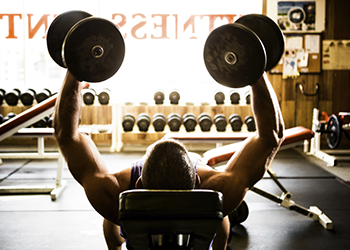 When you begin working you should choose a weight that comfortable for whatever exercising you're doing. As you progress, you should be adding more weight and more reps.
When you begin working you should choose a weight that comfortable for whatever exercising you're doing. As you progress, you should be adding more weight and more reps.
Add 2-5lbs per exercise per week. Of course you should be careful not to injure yourself, but it's very important to push yourself to get stronger. If you're doing things right, you should naturally get stronger and build muscle.
Adding weight is not the only way to increase resistance. Changing up the routine is also important. Try new exercises or change the position of the exercises. Try incline bench press as opposed to the standard bench press.
Principles of Muscle Building#6 – Regular Deload Weeks
After committing to the principles of muscle building for 8 to 12 weeks, take a week off. It's important to stay active during that week, so try another activity like yoga or hiking. A full week off will give your muscles and nervous system much need recovery time. If you have been working hard, you will still build muscle during this time.
A determined mind wants to keep pushing forward, but it's vitally important to take a step away from it on occasion.
Bonus: Supplements
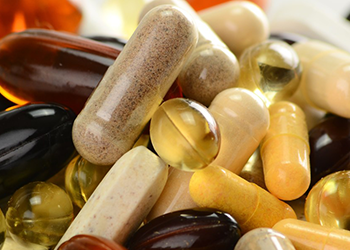 Supplementing for muscle growth is another important area for men over 40 to consider, as our bodies start to succumb to the normal issues of aging, like lower natural testosterone levels, joint pain, and higher levels of inflammation.
Supplementing for muscle growth is another important area for men over 40 to consider, as our bodies start to succumb to the normal issues of aging, like lower natural testosterone levels, joint pain, and higher levels of inflammation.
We can help to improve this by taking specially designed supplements or certain herbs and plants that have been proven to aid these problems.
For example, joint pain can be eased by using Glucosamine and Chondroitin products that help replace damaged or worn cartilage in your body. Fish oils such as Omega 3 or Cod Liver Oil also help with joints by reducing swelling and pain.
Inflammation is also an irritating problem that often occurs in men over 40 and can be treated using ice packs on certain areas if the inflammation is localised.
For inflammation and joint support:
We recommend Glucosamine, Omega 3 (fish oils), and a bio-active Curcumin/Turmeric supplement.
For muscle building and strength:
We recommend creatine monohydrate (the king of safe performance supplements) and a quality protein powder (whey, casein, or plant-based).
For overall health and energy:
We recommend a quality probiotic, multi-vitamin/green’s powder, and Vitamin D3.
For testosterone support:
We recommend looking into DHEA, Vitamin D3, Zinc/Magnesium, and some herbs like Tribulus Terrestris and Fenugreek.
*Again, we cover all of the preferred brands, dosages, and supplement timing in our Old School Muscle Program.
I hope you found this guide valuable…
The principles of muscle building is a very important topic for us. We have tried to cover the key considerations when you are starting out on any new muscle building program.
This information is super well-researched. Yet information without an actual structured action plan never produces results. Don’t let this be another article you read that teaches you useful bits but doesn’t actually IMPROVE your life.
If you’re looking for a safe, effective, and proven muscle building program, designed exclusively for busy men over 40, then I definitely recommend you check out Old School Muscle.
We put all these principles into the exact workout routine, meal plan, and supplementation plan – all precision designed for you as a man over 40 – so you have EVERYTHING you need.
Progress will be gradual, but with these proven methods, increasing your muscle size, strength and definition is 100% possible at any age.
Going back to another quote from Dorian Yates, he says:
These methods do work, as long as you are willing to show up each session and put them into practice, and stick with the eating plan without going off course for the whole weekend, every weekend.
If you stick to the plan, you will earn the rewards!
We’ve compiled the secrets of muscle building from the old school greats…
The best way to make the most of all this information is to have a structured training and nutrition plan in place that you can stick to consistently.
Learning the secrets of the old school muscle builders, from Frank Zane to Reg Parks to Arnold Schwarzenegger himself. These guys knew the secrets to training hard and training smart.
To pay homage to the muscle builders of yesteryear and proving their methods with new cutting edge science, we have developed a muscle building program just for guys like you.
We call it, quite simply ‘Old School Muscle’.
We are bringing back the methods used by Reg Parks and Frank Zane to show you how to train in a way that will have you earning your reward of bigger, stronger, more defined muscles than you had in your 20’s.
This training program works on full body resistance training 3 times per week, focusing on increasing muscle size without high volume training that could lead to injury.
The nutrition plan shows you the best foods to eat, the best times to eat and includes sample recipes for breakfast, lunch, dinner and snacks.
As you are a man in your 40’s that is looking to pack on muscle that you probably didn’t think was possible, we want to help you on your journey by introducing you to our ‘Old School Muscle’ program.
As we specialize here at the Fit Father Project, in helping men over 40 get stronger, fitter and leaner for themselves and their families, you know we’ve got your back.
We will be here every step of the way, to make sure you get the body of your dreams by using the old school methods used by the Mr. Olympias from back in the day.
Take a look at our ‘Old School Muscle’ muscle building program, to see why this will be the choice for you.

Your new friend & weight loss coach,
Dr. Anthony Balduzzi, NMD
Men's Health Doctor & Founder
Fit Father Project & Fit Mother Project
Founder, Fit Father Project & Fit Mother Project
After watching his own Dad lose his health and pass away at the young age of 42, Dr. Balduzzi founded The Fit Father Project and Fit Mother Project to help busy dads and moms get and stay healthy for their families.
Dr. Anthony Balduzzi holds dual degrees in Psychology & Nutrition from the University of Pennsylvania, a Doctorate of Naturopathic Medicine, and is also a former national champion bodybuilder. He’s is most proud of the fact that he’s helped over 40,000 families in over 100 countries lose weight and get healthy for life.
P.S. If you haven't seen my FREE 1-Day Meal Plan for busy fathers, I highly recommend you click here to get a free copy sent directly to your email. Remember: nutrition and sleep are two foundations of health.
A small note about research cited in this article:
*Always remember: weight loss results & health changes/improvements vary from individual to individual. Just because these studies cite certain data does not mean you will experience these results/outcomes. Always consult with your doctor before making decisions about your health. This is not medical advice – simply well-researched information and tips to sleep better. Thanks for reading!
P.S. If you found this guide valuable, please share it with your friends and family who will benefit too.








